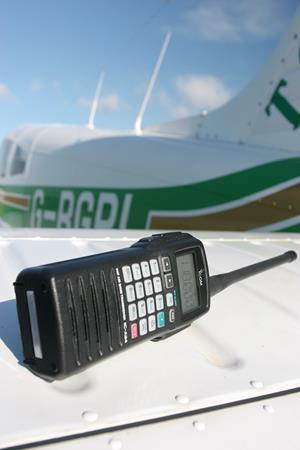The Impact of 8.33 kHz channel spacing for the Aviation Radio User

So what are the changes?
As of October 27, 2007, any aircraft operating above Flight Level 195 (FL195) within European airspace has to be equipped with 8.33 kHz Airband radios. The next change was to introduce 8.33 kHz channel spacing below FL195. This began in January 2014 when any general aviation (GA) aircraft operating Instrument Flight Rules (IFR) had to be equipped with 8.33 kHz capable Airband radios. By December 31, 2015, frequencies used by Operations Control (OPC) will need to be converted to 8.33 kHz channel spacing. By January 1, 2018, all aviation radios operating in ICAO European regions must have 8.33 kHz channel spacing capability.What does this mean for me?
It depends. Many commercial operators have already upgraded their radios to 8.33 kHz channel spacing, and new aircraft are typically equipped with 8.33 kHz channel spacing, so little will need to be done. Anyone seeking to purchase an older aircraft – with plans to fly within European airspace – needs to consider upgrading their radio equipment if it is not 8.33 kHz channel spacing.What happens if you don’t change your Airband radio?
You won’t be able to use an old 25 kHz Airband radio once the frequencies are reallocated and the dates for change in different areas are passed. In fact, eventually, you will not be able to communicate with other radio users.What if I am a GA Pilot, Balloonist, Microlight Pilot?
You will be included in the regulations. The CAA announced that General Aviation (GA) pilots were given dispensation to use 8.33 kHz handheld radios as primary means of communication on their Aircraft Radio Licence outside of Class A, B and C airspace. The reason for the simplified procedures, allowing handheld Airband radios capable of 8.33 kHz spacing for airborne use, was an attempt to reduce burdening GA pilots with commercial transport rules. The latest handheld Airband radios now have equivalent performance capabilities to fixed radios albeit with slightly reduced radio range due to lower output power from the transmitter. 8.33 kHz handheld radio allows users, with little space, a primary means of communication which should further improve awareness of other airspace users, positively contributing to safety in the GA sector. It also means that GA pilots wont have to modify aircraft systems. The new handheld procedures only apply to non-EASA (European Aviation Safety Agency) or Annex II aircraft and the radios aren’t approved for use outside of Britain, unless bi-lateral agreements are reached between the UK and other countries. Please note:• The approval is valid for the handheld equipment only. The installation of accessories, such as chargers, needs to be completed under the existing regulations applicable to the aircraft.
• The approval is valid for use in UK registered non EASA aircraft only.
• The approval is valid for use within the UK only.
• The approval is not valid for use in operation in Class A, Class B or Class C airspace. Important Dates
The important dates are: From 17 Nov 2013
• Manufacturers are not able to market Airband radios unless they are 8.33 kHz capable.
• No aircraft may receive an initial CofA or Permit unless any radios fitted are 8.33 kHz capable.
• Any upgrade to aircraft radios must include an 8.33 kHz capability. From 1 Jan 2014
• No aircraft may fly Instrument Flight Rules (IFR) in class A, B or C airspace unless it is 8.33 kHz capable.
• Currently there is no date given for aircraft flying Visual Flight Rules (VFR) in class A, B or C airspace. Therefore VFR flight may continue in these airspaces, until such time as the particular airspace operates 8.33 kHz. This could possibly continue until the end of 2018. From 31 Dec 2017
• All aircraft radios operated in the EU must be 8.33 kHz capable. For further reading about the forthcoming 8.33kHz channel spacing changes, visit the dedicated CAA 8.33kHz radio page. For more information about the Icom airband range visit the airband section of our website

